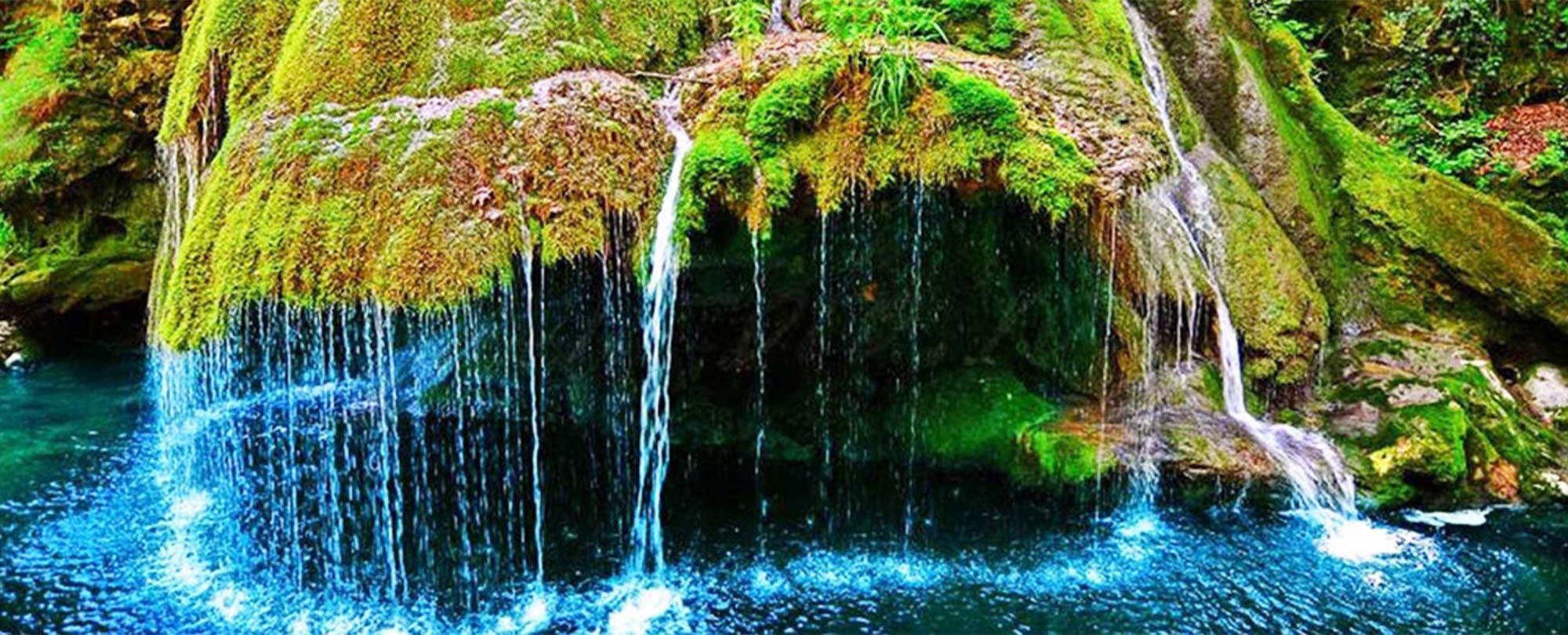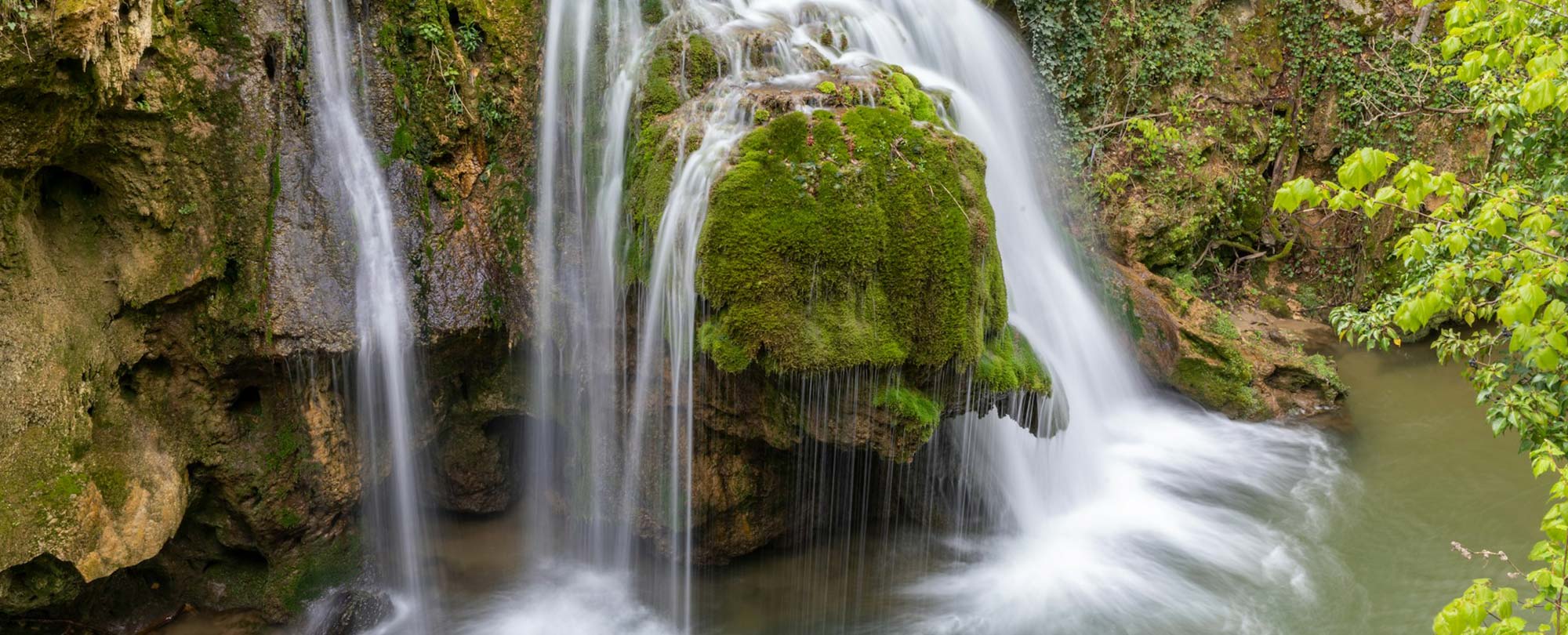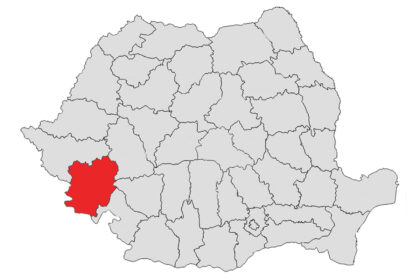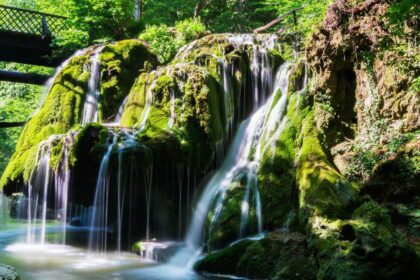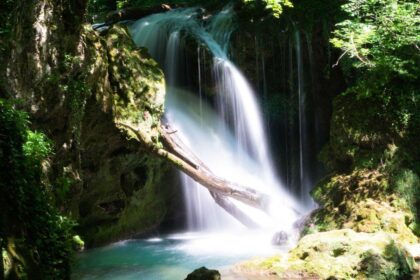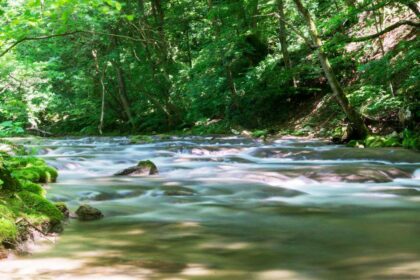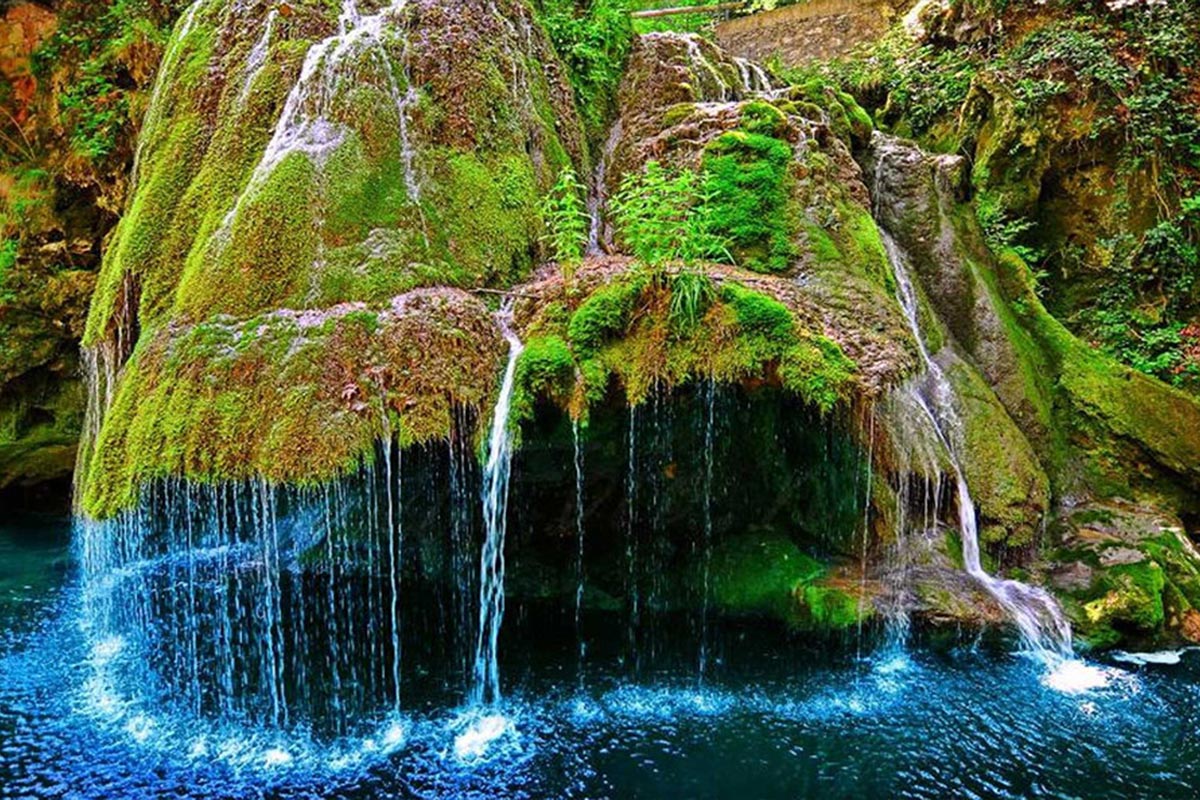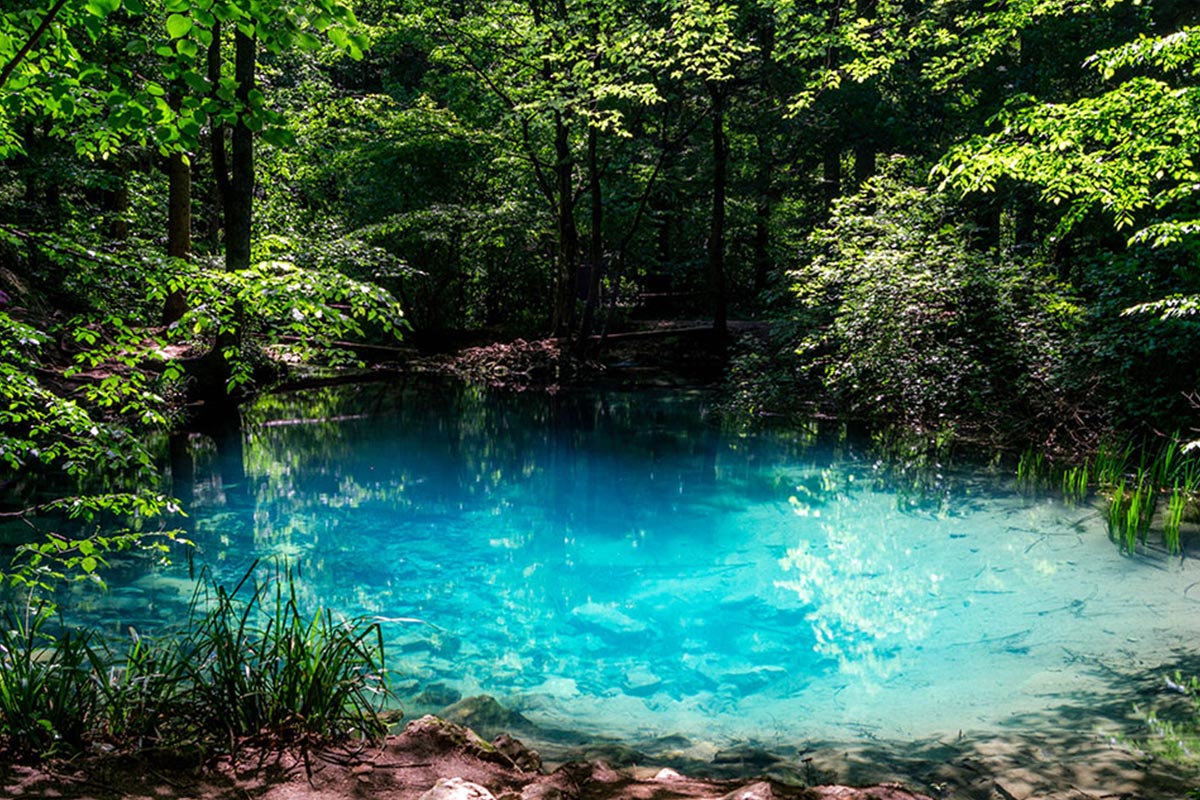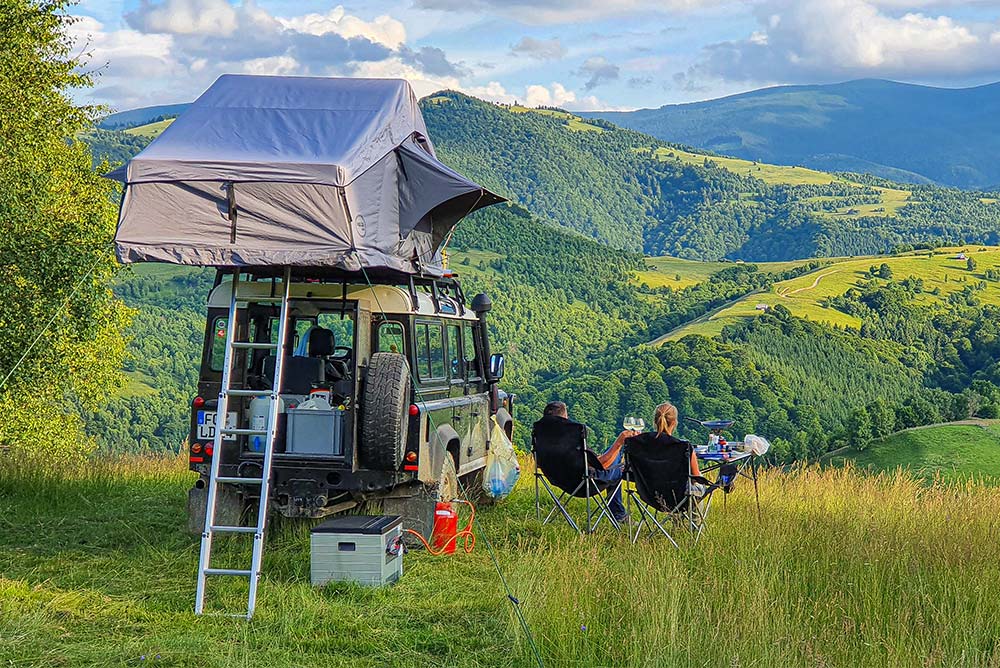Caraș-Severin County (Cities: Resita, Caransebes, Bocșa)
Caraș-Severin is a Romanian county in Banat with the district town of Reșita (German Reschitza, Hungarian Resicabánya). The common abbreviation and license plate is CS. Caraș-Severin County is located in the southwest of Romania, bordering Timiș County to the north and west, Hunedoara County to the northeast and east, Gorj County to the east and Mehedinți County to the southeast and south to the south and west to Republic of Serbia.
Facebook PostsView all Facebook posts!

Open-air Locomotive Museum in Resita
(15 December 2025)
X

Open-air Locomotive Museum in Resita
(15 December 2025)
Pictures from the tour by Tom & Helga. We both met at the SlowFood Festival in Berca in September 2024, became friends, and now... have received nearly 1,000 pictures from the two-month tour (September and October 2024) through Romania. Many thanks 🥰
But where to start, anywhere... for example, in the city of Resita in Caras-Severin County, at the city's open-air locomotive museum. A wonderful travel destination surrounded by greenery and many mountains.
But where to start, anywhere... for example, in the city of Resita in Caras-Severin County, at the city's open-air locomotive museum. A wonderful travel destination surrounded by greenery and many mountains.

Muntele Mic Massif in the Retezat Mountains
(07 December 2025)
X

Muntele Mic Massif in the Retezat Mountains
(07 December 2025)
The Muntele Mic Massif (Caras-Severin County) is a mountain group in the Retezat-Godeanu Mountains, which are part of the Southern Carpathians.
It is located between the Tarcu Mountains, the Godeanu Mountains, and the Retezat Mountains. The highest peak is Muntele Mic, at 1,802 meters.
It is located between the Tarcu Mountains, the Godeanu Mountains, and the Retezat Mountains. The highest peak is Muntele Mic, at 1,802 meters.

Salbagelu Nou | A Banat village through changing times
(09 November 2025)
X

Salbagelu Nou | A Banat village through changing times
(09 November 2025)
Eichenthal (in Romanian: Sălbăgelu Nou) is located in Caraș-Severin County in the historical region of Banat. In 1894, the village was settled by German colonists from various German villages in Banat and the Banat Mountains, and it remained a German village until the 1970s.
From then on, the Germans migrated to the cities and to Germany. Afterwards, Ukrainians from Maramureș (a region in northern Romania) settled in the village. The small former Catholic church is now Ukrainian Orthodox. There are no Germans living in the village anymore. However, most of the oaks that gave the village its name still stand.
We thank Mr. Frank Schleßmann for sending these beautiful pictures (April 23/24, 2025) and the corresponding text/explanation.
From then on, the Germans migrated to the cities and to Germany. Afterwards, Ukrainians from Maramureș (a region in northern Romania) settled in the village. The small former Catholic church is now Ukrainian Orthodox. There are no Germans living in the village anymore. However, most of the oaks that gave the village its name still stand.
We thank Mr. Frank Schleßmann for sending these beautiful pictures (April 23/24, 2025) and the corresponding text/explanation.

Bigar Waterfall | Caraș-Severin County
(10 October 2025)
X

Bigar Waterfall | Caraș-Severin County
(10 October 2025)
Near the town of Anina lies the Bigar Waterfall, which formed on a base of travertine (calcareous tuff) and topped the list of the world’s most impressive waterfalls on the World Geography website in 2013.
A large cantilevered travertine slab collapsed under its own weight on 7 June 2021. Since then the appearance of the waterfall has changed, but it remains well worth a visit 🥰
A large cantilevered travertine slab collapsed under its own weight on 7 June 2021. Since then the appearance of the waterfall has changed, but it remains well worth a visit 🥰

Impressions from Baile Herculane / Herkulesbad
(02 October 2025)
X

Impressions from Baile Herculane / Herkulesbad
(02 October 2025)
The town of Baile Herculane (in German Herkulesbad, in Hungarian Herkulesfürdő) is a spa resort in Caraș-Severin County, in the historical region of Banat. Over a length of four kilometers, 16 thermal springs with different mineral compositions are utilized.
Notable monuments and buildings include the bronze statue of Hercules (1847), the Spa Museum with archaeological finds from Roman times, the Roman baths (Hotel Roman on the ground floor), the Casino (1913), and the Austrian baths (built between 1883 and 1886 according to the plans of architect Carl Wilhelm von Doderer).
Pictures from early October 2025, OM
Notable monuments and buildings include the bronze statue of Hercules (1847), the Spa Museum with archaeological finds from Roman times, the Roman baths (Hotel Roman on the ground floor), the Casino (1913), and the Austrian baths (built between 1883 and 1886 according to the plans of architect Carl Wilhelm von Doderer).
Pictures from early October 2025, OM
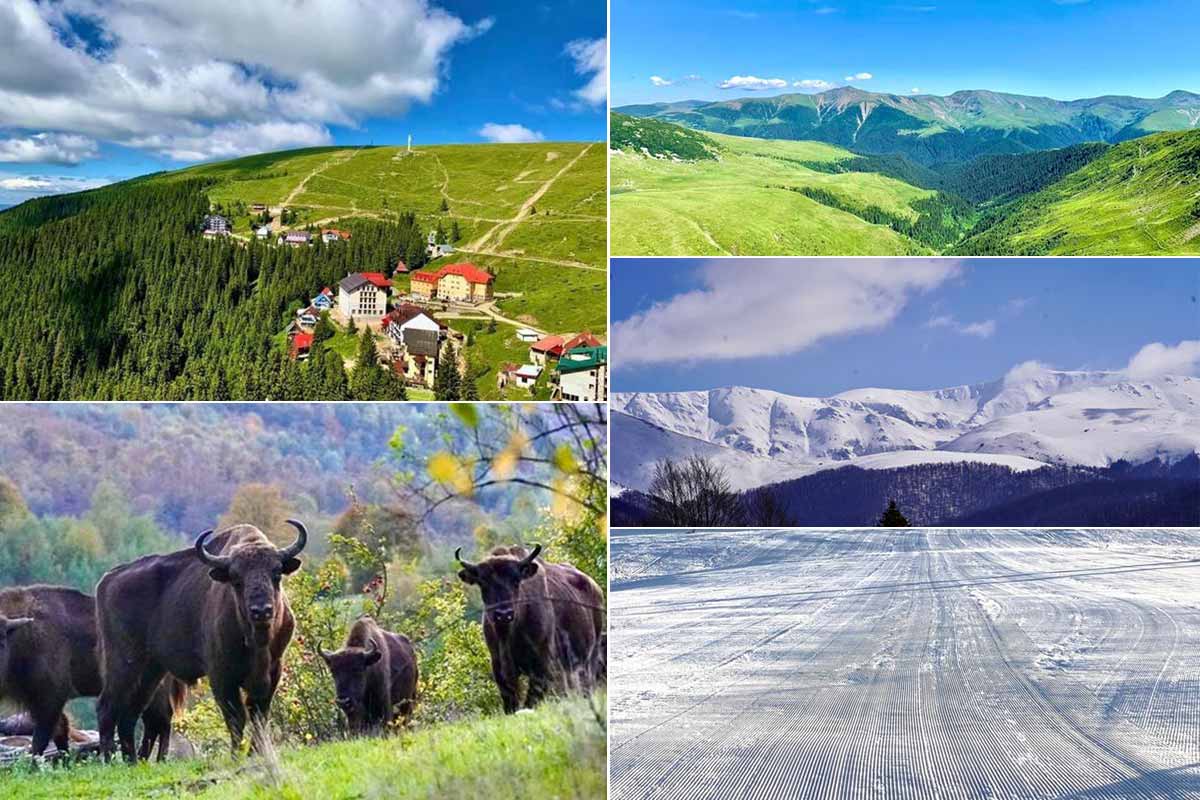
Muntele Mic Massif | Caras-Severin County
(09 September 2025)
X

Muntele Mic Massif | Caras-Severin County
(09 September 2025)
The Muntele Mic massif is a mountain group from the Retezat-Godeanu mountains, which belongs to the south of the Carpathians.
It is located between the Tarcu Mountains, the Godeanu Mountains and the Retezat Mountains. The highest peak is Mount Peak ( ) Small Mountain with a height of 1802 Mettern. It is a small but popular ski resort in Banat, 130 km from Timișoara. There are six slopes ( 6 ) with different levels of difficulty: Borlova 1, Borlova 2, Valsanu, Nordica, Isai, Felix.
Small Mountain is also popular with summer hiking and easily accessible by car.
We would like to thank Mrs Corinna Haisch Coliev for sending us the pictures / text. We would also like to thank Muntele Mic Online for permission to use the images.
It is located between the Tarcu Mountains, the Godeanu Mountains and the Retezat Mountains. The highest peak is Mount Peak ( ) Small Mountain with a height of 1802 Mettern. It is a small but popular ski resort in Banat, 130 km from Timișoara. There are six slopes ( 6 ) with different levels of difficulty: Borlova 1, Borlova 2, Valsanu, Nordica, Isai, Felix.
Small Mountain is also popular with summer hiking and easily accessible by car.
We would like to thank Mrs Corinna Haisch Coliev for sending us the pictures / text. We would also like to thank Muntele Mic Online for permission to use the images.

Saint Ladislau Fortress | Caraş-Severin County
(08 September 2025)
X

Saint Ladislau Fortress | Caraş-Severin County
(08 September 2025)
The Sfantul Ladislau Fortress in Coronini will be inaugurated at the end of this year after a long renovation.
The Cula Fortress, also known as the Fortress of Saint Ladislaus from Coronini, was built in 1428 by Sigismund, King of Hungary. There was also a fortress of Dakar in the same place (about 50 BC to 100 AD).
Thanks to Banatul Montan for permission to use these images.
The Cula Fortress, also known as the Fortress of Saint Ladislaus from Coronini, was built in 1428 by Sigismund, King of Hungary. There was also a fortress of Dakar in the same place (about 50 BC to 100 AD).
Thanks to Banatul Montan for permission to use these images.

Ochiu Bei | Beusnita Waterfall
(06 September 2025)
X

Ochiu Bei | Beusnita Waterfall
(06 September 2025)
Lake Ochiul Beiului (The Eye of the Bei) is located in the Cheile Nerei-Beusnița National Park in the southwest of Romania (County: Caras-Severin), near the border with Serbia and the villages of Deutsch-Orawitz (Oravita) and Steierdorf (to the west and east, respectively).
It has a depth of up to 3.6 meters and a diameter of about 15 meters. The fairytale-like green-blue water never freezes in winter, as the lake is constantly supplied with water from a spring.
We thank Ochiu Bei for allowing us to use these beautiful pictures.
It has a depth of up to 3.6 meters and a diameter of about 15 meters. The fairytale-like green-blue water never freezes in winter, as the lake is constantly supplied with water from a spring.
We thank Ochiu Bei for allowing us to use these beautiful pictures.
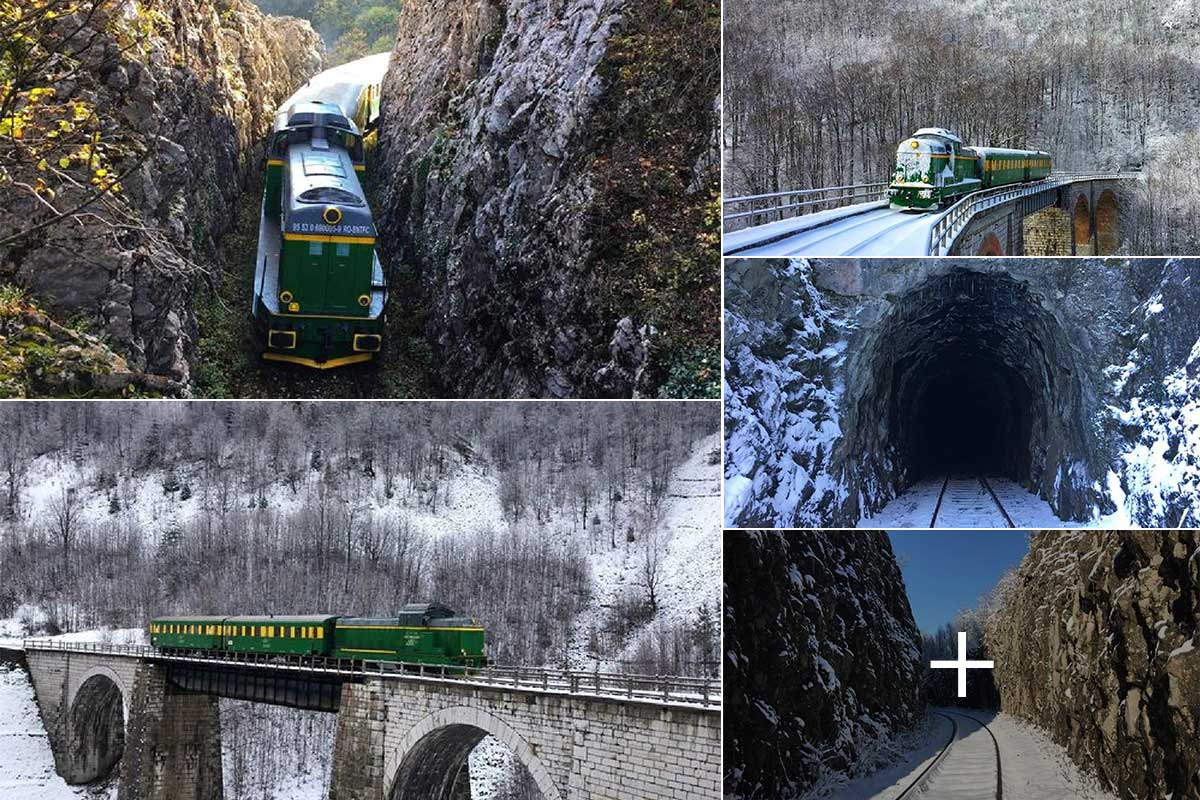
Oravita – Anina railway line in Banat | Also in summer
(28 August 2025)
X

Oravita – Anina railway line in Banat | Also in summer
(28 August 2025)
The Oravița – Lisava – Anina railway line (in Caraș-Severin County) was inaugurated on 15 December 1863 as the first mountain railway on the present-day territory of Romania.
Construction began in 1861 and was a challenging engineering feat, as the railway runs through a mountainous region (the western part of the Banat Mountains). The 33.4 km railway line features no fewer than 14 tunnels with a total length of 2.1 km and nine (9) viaducts.
The route starts in Oravița and then ascends to the plateau of the Semenic Mountains massif on a path where no other road exists.
We thank Banatul Montan for permission to use these images.
Construction began in 1861 and was a challenging engineering feat, as the railway runs through a mountainous region (the western part of the Banat Mountains). The 33.4 km railway line features no fewer than 14 tunnels with a total length of 2.1 km and nine (9) viaducts.
The route starts in Oravița and then ascends to the plateau of the Semenic Mountains massif on a path where no other road exists.
We thank Banatul Montan for permission to use these images.

Bigar Waterfall | Caras-Severin County
(13 August 2025)

Bigar Waterfall | Caras-Severin County
(11 July 2025)
X

Bigar Waterfall | Caras-Severin County
(11 July 2025)
Near the town of Anina lies the Bigar Waterfall, which was formed from travertine (limestone tuff) and topped the list of the most impressive waterfalls in the world on the World Geography website in 2013.
We thank Ms. Corina E. Mateescu for the permission to use these pictures.
We thank Ms. Corina E. Mateescu for the permission to use these pictures.

Grand Romania tour in 1,000 pictures | Băile Herculane
(09 July 2025)
X

Grand Romania tour in 1,000 pictures | Băile Herculane
(09 July 2025)
The city of Băile Herculane (in German Herkulesbad, in Hungarian Herkulesfürdő) is a spa resort in Caraș-Severin County, in the historical region of Banat. Over a length of four kilometers, 16 thermal springs with different mineral compositions are used.
Notable monuments and buildings include the bronze statue of Hercules (1847), the spa museum with archaeological finds from Roman times, the Roman baths (on the ground floor of the Roman Hotel), the casino (1913), and the Austrian baths (built between 1883 and 1886 according to the plans of architect Carl Wilhelm von Doderer).
We thank Tom & Helga for these beautiful pictures from their Romania tour in September and October 2024. Many thanks!
Notable monuments and buildings include the bronze statue of Hercules (1847), the spa museum with archaeological finds from Roman times, the Roman baths (on the ground floor of the Roman Hotel), the casino (1913), and the Austrian baths (built between 1883 and 1886 according to the plans of architect Carl Wilhelm von Doderer).
We thank Tom & Helga for these beautiful pictures from their Romania tour in September and October 2024. Many thanks!

Strength lies in tranquility | Flocks of sheep in Romania
(04 July 2025)
X

Strength lies in tranquility | Flocks of sheep in Romania
(04 July 2025)
As you drive through the country, you can see a multitude of herds of sheep, goats and also cattle, guarded by shepherds and their dogs.
Here you will find the last nomads in Europe, often moving their herds hundreds of kilometers from winter pastures to summer pastures and back. More than 3,000 wolves still roam Romania in the border regions with Ukraine and represent a permanent threat to these herds.
In the Țarcu Mountains (in the south-west of Romania) you can even admire a herd of free European bison, extinct, but reintroduced there a few years ago by the WWF.
Images: end of May 2020
Here you will find the last nomads in Europe, often moving their herds hundreds of kilometers from winter pastures to summer pastures and back. More than 3,000 wolves still roam Romania in the border regions with Ukraine and represent a permanent threat to these herds.
In the Țarcu Mountains (in the south-west of Romania) you can even admire a herd of free European bison, extinct, but reintroduced there a few years ago by the WWF.
Images: end of May 2020

Trei Ape Lake | Caraș-Severin County
(28 June 2025)
X

Trei Ape Lake | Caraș-Severin County
(28 June 2025)
Lake Trei Ape is an artificial lake (reservoir) consisting of three streams named Brebu, Gradiste and Semenic, created in 1971 by the construction of a dam.
On the shore of Trei Ape lake is the resort of the same name with many offers. The lake is located approximately 35 kilometers from the town of Resita in Caras-Severin county.
Thanks to Banatul Montan for permission to use these images.
On the shore of Trei Ape lake is the resort of the same name with many offers. The lake is located approximately 35 kilometers from the town of Resita in Caras-Severin county.
Thanks to Banatul Montan for permission to use these images.
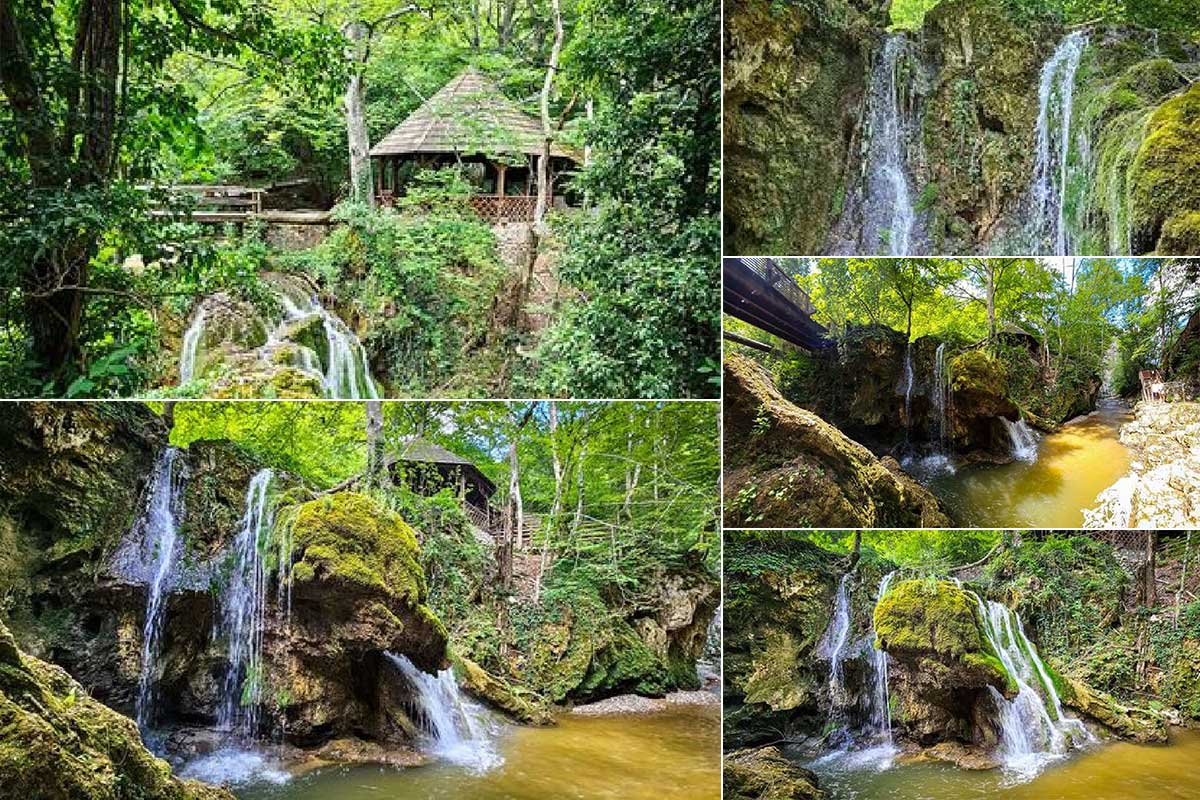
Bigar Waterfall | Caras-Severin county
(24 June 2025)
X

Bigar Waterfall | Caras-Severin county
(24 June 2025)
Near the city of Anina lies the Bigăr Waterfall, formed on a travertine (limestone tuff) base, which was ranked the most impressive waterfall in the world by World Geography in 2013.
A large freestanding travertine slab collapsed under its own weight on June 7, 2021. Since then, the appearance of the waterfall has changed, but it remains a place well worth visiting 🥰
We thank Corina E. Mateescu for the permission to use this image(s).
A large freestanding travertine slab collapsed under its own weight on June 7, 2021. Since then, the appearance of the waterfall has changed, but it remains a place well worth visiting 🥰
We thank Corina E. Mateescu for the permission to use this image(s).

Beușnița Waterfalls | Caraș-Severin County
(19 June 2025)
X

Beușnița Waterfalls | Caraș-Severin County
(19 June 2025)
The Beușnița Waterfalls (the highest is over 5 m tall) are located on the Beu River, above the Ochiul Beului Lake (The Eye of the Bei).
They were formed over thousands of years by the action of water on the limestone bedrock. The Beușnița Waterfalls are located in the Cheile Nerei-Beușnița National Park, Caraș-Severin County, near the border with Serbia and the small towns of Oravița and Anina.
Both the waterfalls and the lake are well-known and beautiful excursion destinations in this region.
We thank the photographer, Mrs. Corina E. Mateescu, for permission to use these images.
They were formed over thousands of years by the action of water on the limestone bedrock. The Beușnița Waterfalls are located in the Cheile Nerei-Beușnița National Park, Caraș-Severin County, near the border with Serbia and the small towns of Oravița and Anina.
Both the waterfalls and the lake are well-known and beautiful excursion destinations in this region.
We thank the photographer, Mrs. Corina E. Mateescu, for permission to use these images.
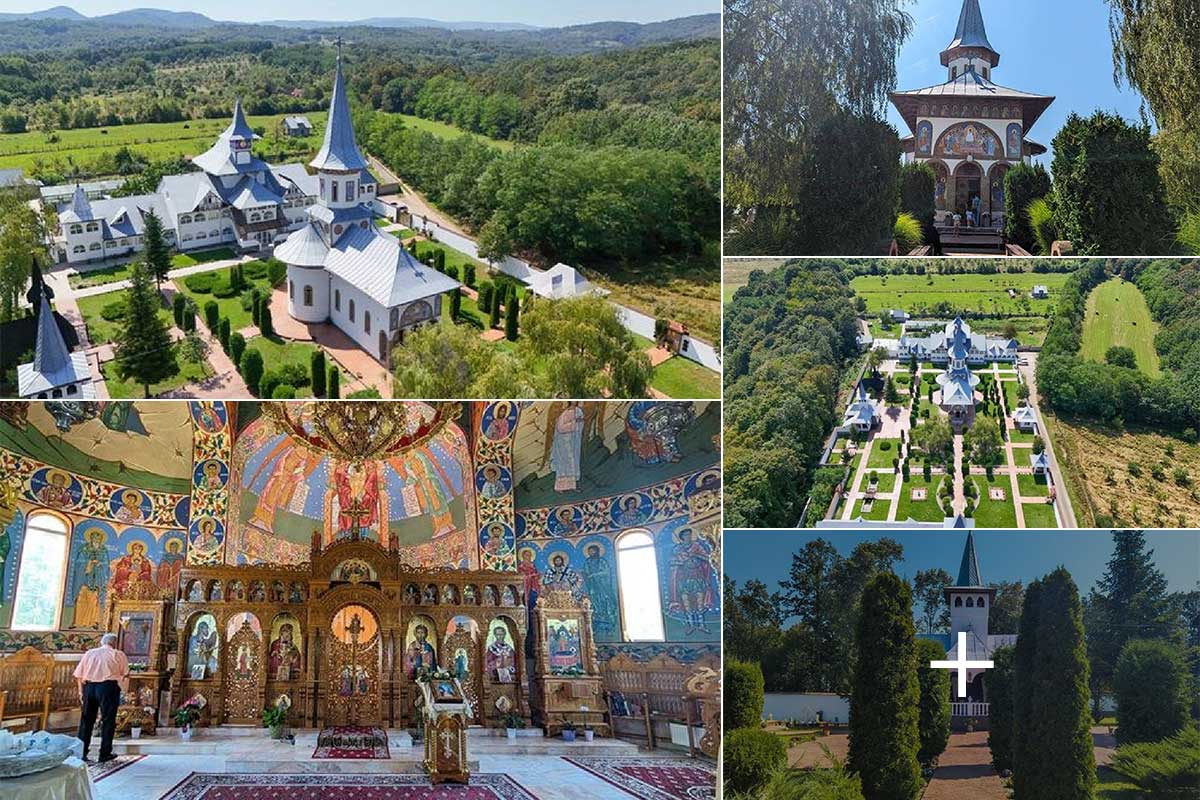
Manastirea (Monastery) Teius | Caransebes | Caras-Severin County
(08 June 2025)
X

Manastirea (Monastery) Teius | Caransebes | Caras-Severin County
(08 June 2025)
The Teiuș Monastery in Caraș-Severin County was built in 1999. It includes several small churches surrounded by an impressive garden with roses and trees.
We thank Banatul Montan for the permission to use these images.
We thank Banatul Montan for the permission to use these images.

The Bigar Waterfall | Caras-Severin County
(03 June 2025)
X

The Bigar Waterfall | Caras-Severin County
(03 June 2025)
Near the city of Anina lies the Bigar Waterfall, which was formed from travertine (limestone tuff) and, in 2013, topped the list of the world’s most impressive waterfalls on the World Geography website.
A large free-standing travertine slab collapsed under its own weight on June 7, 2021. Since then, the appearance of the waterfall has changed, but it remains well worth a visit.
A large free-standing travertine slab collapsed under its own weight on June 7, 2021. Since then, the appearance of the waterfall has changed, but it remains well worth a visit.
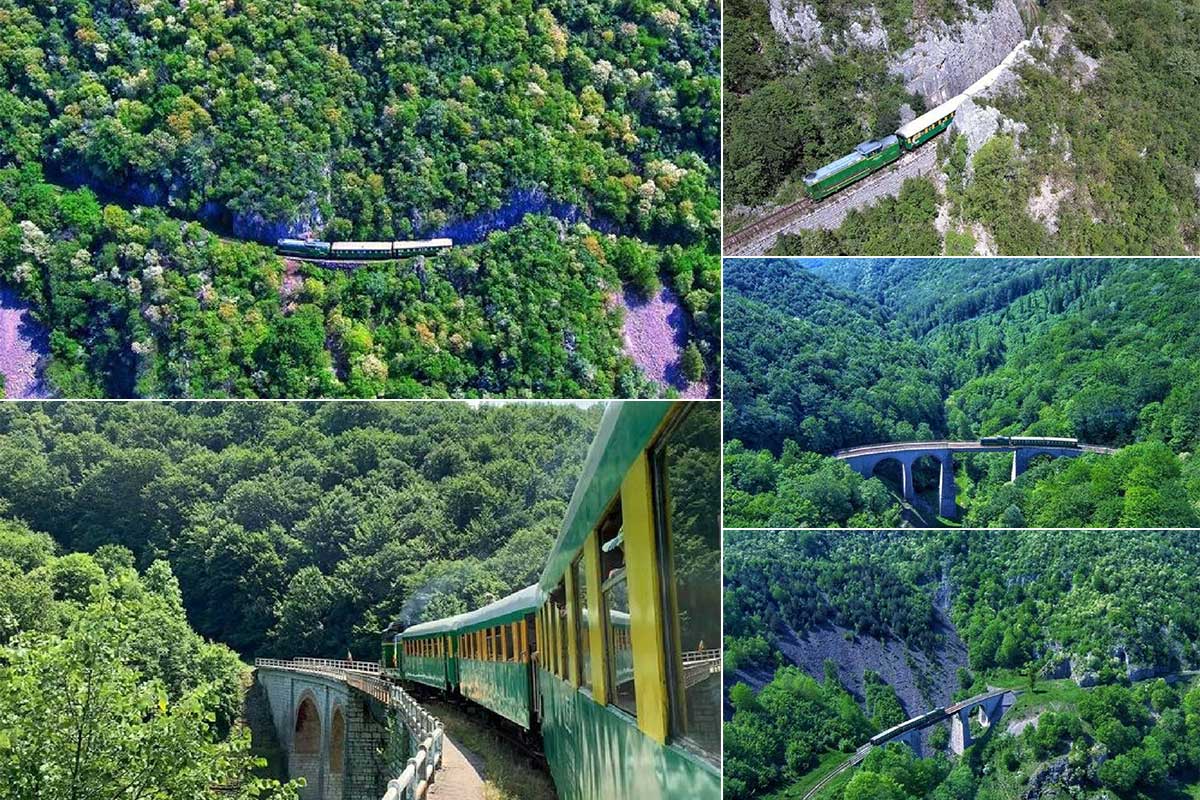
By train through Banat
(25 May 2025)
X

By train through Banat
(25 May 2025)
Banat is a historical region in southeastern Europe, which is now in the states of Romania, Serbia and Hungary. The term Banat derives from the domination of a ban (Serbian / Croatian / Hungarian for Graf / Markgraf).
The train runs daily from Oravita to Anina and is one of the oldest and most spectacular mountain railways in Romania, which was operated in 1863. viaducts crossing deep valleys. The railway road rises from 218 meters altitude (Oravita) to 558 meters altitude (Anina) and bypasses the Anina Mountains passing through the Jitin Valley.
We thank Banatul Montan for permission to use these pictures.
The train runs daily from Oravita to Anina and is one of the oldest and most spectacular mountain railways in Romania, which was operated in 1863. viaducts crossing deep valleys. The railway road rises from 218 meters altitude (Oravita) to 558 meters altitude (Anina) and bypasses the Anina Mountains passing through the Jitin Valley.
We thank Banatul Montan for permission to use these pictures.
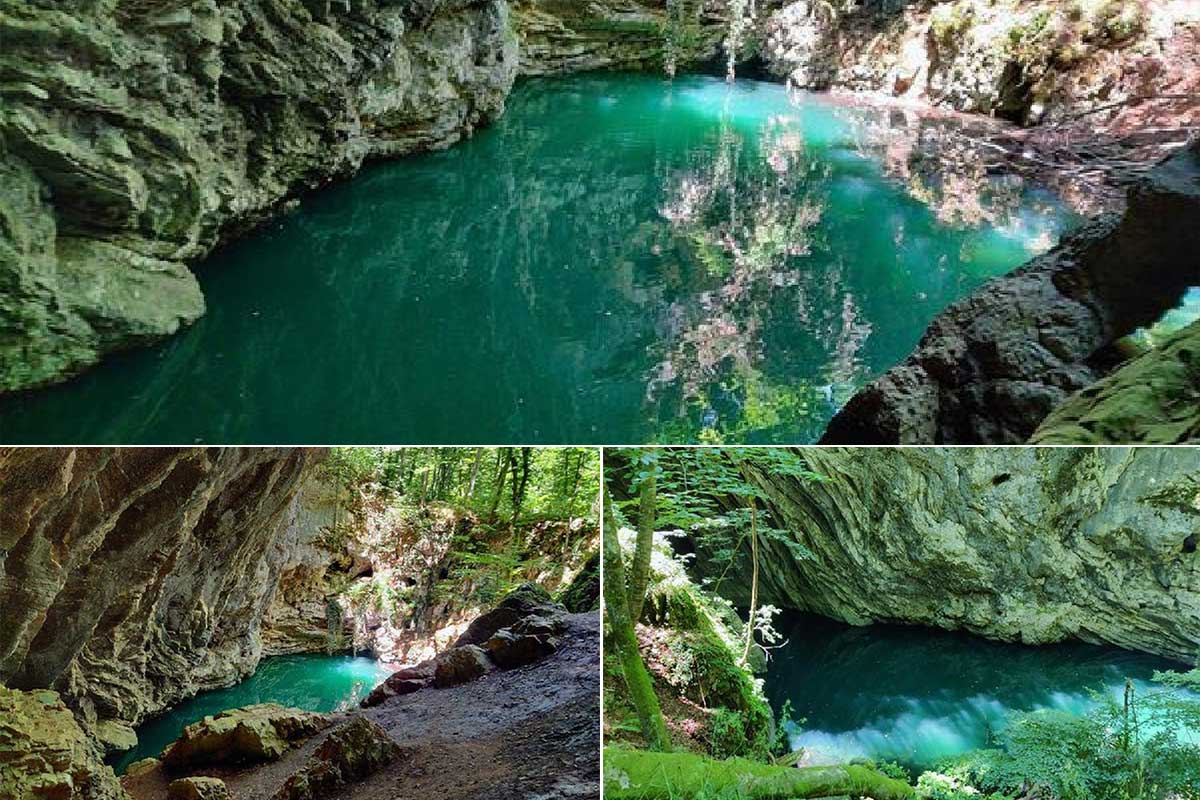
Lacul Dracului | Caras-Severin County
(11 May 2025)
X

Lacul Dracului | Caras-Severin County
(11 May 2025)
Dracului Lake (hell or devil in German) is located in the Cheile Nerei-Beusnița Natural Park, Banat region, Caraș-Severin county in western Romania.
In earlier times, it was an underground lake that came to the surface after a partial collapse of the ceiling of the cave where it was located. It has a size of about 700 square meters, a diameter of 20 meters and a depth of about 12 meters. Its name comes from a local legend that Satan threw himself into the lake after losing a bet with a shepherd.
We thank Banatul Montan for the permission to use these pictures.
In earlier times, it was an underground lake that came to the surface after a partial collapse of the ceiling of the cave where it was located. It has a size of about 700 square meters, a diameter of 20 meters and a depth of about 12 meters. Its name comes from a local legend that Satan threw himself into the lake after losing a bet with a shepherd.
We thank Banatul Montan for the permission to use these pictures.
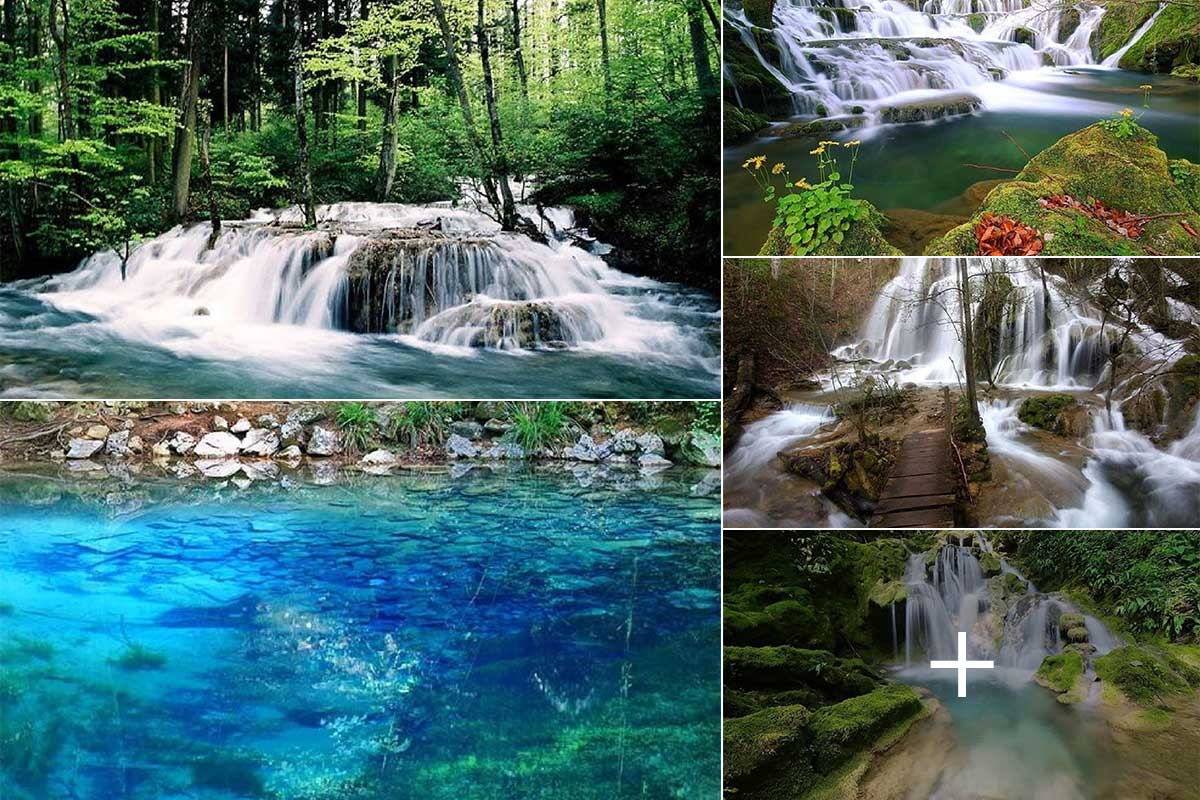
Ochiu Bei | Cascada Beușnița
(10 May 2025)
X

Ochiu Bei | Cascada Beușnița
(10 May 2025)
The Ochiul Beiului Lake (The Eye of Bei) is located in the Cheile Nerei-Beușnița National Park in southwestern Romania (County: Caraș-Severin), near the border with Serbia and the villages of Deutsch-Orawitz (Oravita) and Steierdorf (in the west and east respectively).
It has a depth of up to 3.6 meters and a diameter of about 15 meters. The fairy-tale green-blue water never freezes in winter, as the lake is continuously fed by a spring.
We thank Ochiu Bei for allowing us to use these beautiful images.
It has a depth of up to 3.6 meters and a diameter of about 15 meters. The fairy-tale green-blue water never freezes in winter, as the lake is continuously fed by a spring.
We thank Ochiu Bei for allowing us to use these beautiful images.

The Văliug Lake in Banat
(01 May 2025)
X

The Văliug Lake in Banat
(01 May 2025)
The lake is named after the commune of Văliug (German: Franzdorf) in Caraș-Severin County, Banat region, Romania.
The commune is located in the valley of the Bârzava River at an altitude of 550 meters, at the foot of the Semenic Mountains.
We thank Banatul Montan (photos: Flavius Sfv) for the permission to use these pictures.
The commune is located in the valley of the Bârzava River at an altitude of 550 meters, at the foot of the Semenic Mountains.
We thank Banatul Montan (photos: Flavius Sfv) for the permission to use these pictures.
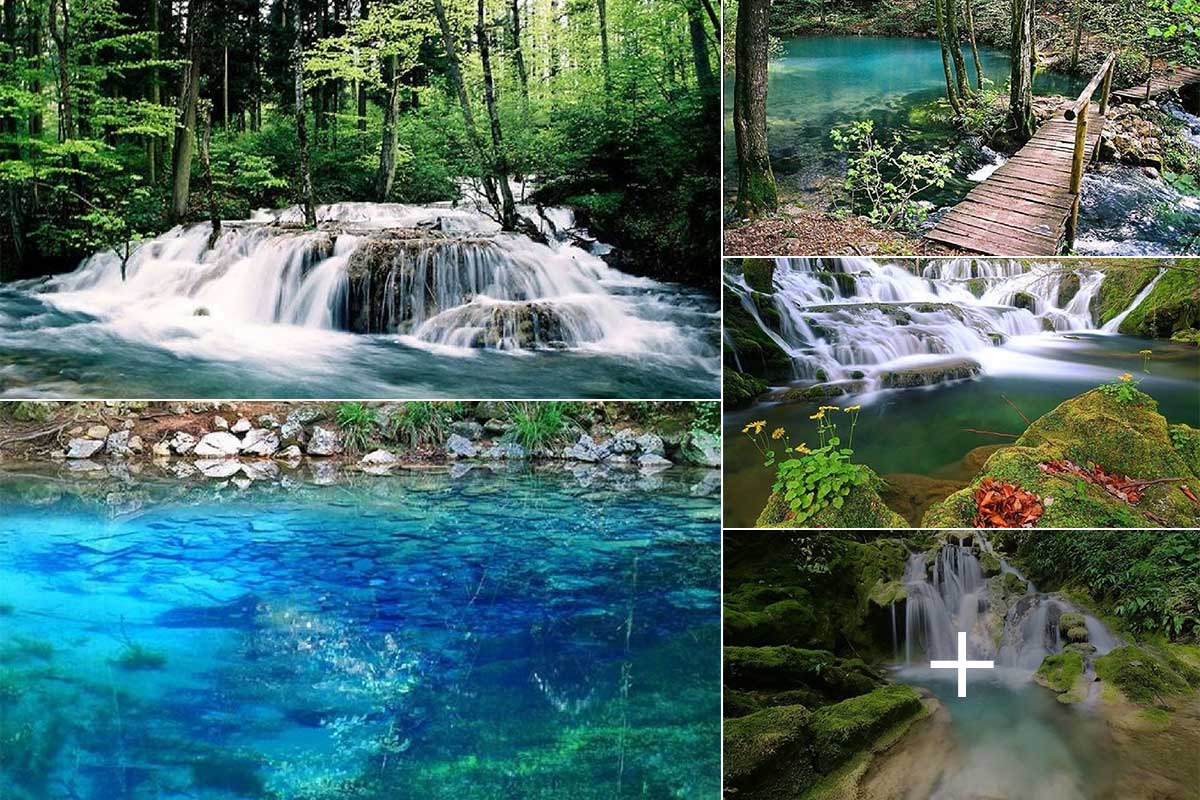
Ochiu Bei and Cascada Beusnita
(07 April 2025)
X

Ochiu Bei and Cascada Beusnita
(07 April 2025)
Ochiul Beiului Lake is located in the Cheile Nerei-Beușnița National Park in southwestern Romania (Caraș-Severin County), near the Serbian border and the villages of Oravița and Steierdorf (to the west and east, respectively).
It has a depth of up to 3.6 meters and a diameter of about 15 meters. The fairy-tale green-blue water never freezes in winter, as the lake is continuously fed by a spring.
Learn more:
https://xn--urlaub-in-rumnien-2qb.de/.../ausflugsziele.../
Thanks to Ochiu Bei for the permission to use these beautiful images.
Images: Ochiu Bei, Beușnița Waterfall
It has a depth of up to 3.6 meters and a diameter of about 15 meters. The fairy-tale green-blue water never freezes in winter, as the lake is continuously fed by a spring.
Learn more:
https://xn--urlaub-in-rumnien-2qb.de/.../ausflugsziele.../
Thanks to Ochiu Bei for the permission to use these beautiful images.
Images: Ochiu Bei, Beușnița Waterfall
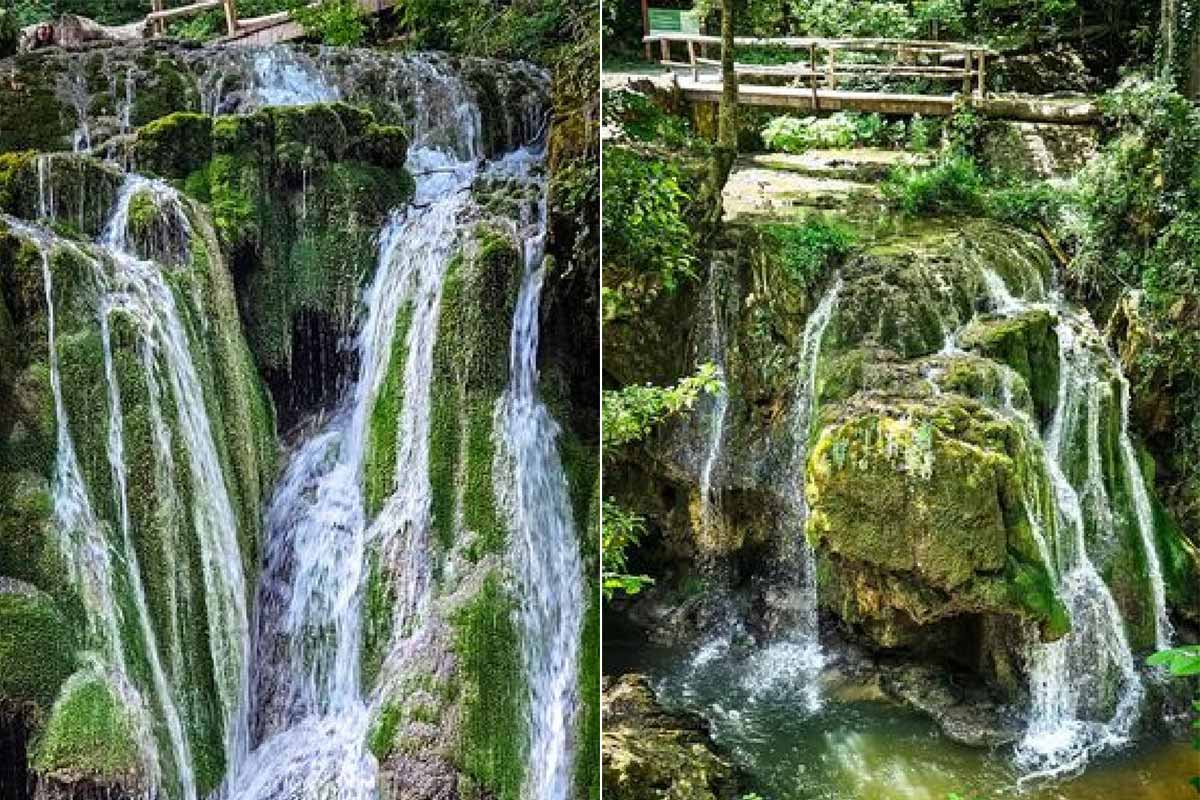
Bigar Waterfall | Caras-Severin County
(04 April 2025)
X

Bigar Waterfall | Caras-Severin County
(04 April 2025)
Near the town of Anina is the Bigar Falls, which was created based on the travertine ( limestone tuff ) and on the World Geography website in 2013 led the list of the most impressive waterfalls in the world.
A large plate of travertine cantileved collapsed on June 7, 2021 under its own weight. Since then, the image of the waterfall has changed, but is worth visiting and remains.
We thank Ms. Corina E. Mateescu for permission to use these images.
A large plate of travertine cantileved collapsed on June 7, 2021 under its own weight. Since then, the image of the waterfall has changed, but is worth visiting and remains.
We thank Ms. Corina E. Mateescu for permission to use these images.

Ochiu Bei | Caras-Severin County
(13 January 2025)
X

Ochiu Bei | Caras-Severin County
(13 January 2025)
Der See Ochiul Beiului ( Das Auge des Bei ) befindet sich im Nationalpark Cheile Nerei-Beușnița im Südwesten von Rumänien ( Landkreis Caras-Severin ), nahe zur Grenze zu Serbien und den Dörfern Deutsch-Orawitz ( Oravita ) und Steierdorf ( im Ostwesten bzw. Osten ).
Are o adâncime de până la 3,6 metri și un diametru de aproximativ 15 metri. Apa de basm, de culoare verde-albastru, nu îngheață niciodată iarna, deoarece lacul este furnizat permanent cu apă de un izvor.
We thank Ochiu Bei for granting permission to use these beautiful photos (taken at the end of May 2023).
Are o adâncime de până la 3,6 metri și un diametru de aproximativ 15 metri. Apa de basm, de culoare verde-albastru, nu îngheață niciodată iarna, deoarece lacul este furnizat permanent cu apă de un izvor.
We thank Ochiu Bei for granting permission to use these beautiful photos (taken at the end of May 2023).

